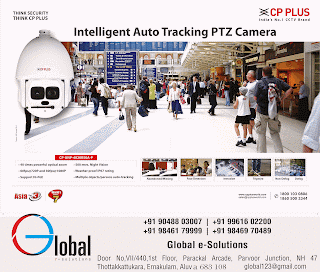Best Practices for Implementing a New Security Camera System: by Global E-Solutions
Best Practices for Implementing a New Security Camera System: by Global E-Solutions
Introduction
Security camera systems are vital tools for ensuring public safety and deterring criminal activities. By capturing and recording visual evidence, these systems provide valuable resources for post-crime investigations and help prevent illegal activities from occurring in areas under surveillance. However, for security camera systems to be effective, it is crucial to implement them correctly. This article outlines best practices for implementing a new security camera system to maximize its benefits
- Conduct a Comprehensive Site Assessment
Before installing a security camera system, it is essential to conduct a thorough site assessment. This assessment should involve evaluating the specific security needs of the area, identifying potential vulnerabilities, and determining the optimal camera locations. Factors to consider include high-risk areas, blind spots, lighting conditions, and the type of surveillance required (e.g., indoor or outdoor monitoring).
- Choose High-Quality Cameras and Equipment
Investing in high-quality cameras and equipment is crucial for the long-term effectiveness of a security camera system. Select cameras that offer high-resolution video capture, wide dynamic range, and low-light performance. Consider factors such as weather resistance, durability, and ease of maintenance. Additionally, ensure compatibility with other system components and scalability for future expansion.
- Optimize Camera Placement
Strategic camera placement is essential to maximize the coverage area and minimize blind spots. Key areas to consider include entry points, parking lots, high-traffic zones, and critical infrastructure. Take into account the camera's field of view, angle, and focal length to ensure adequate coverage and capture essential details. Regularly review and adjust camera positions to adapt to changing security needs.
- Implement Redundancy and Backup Systems
To prevent system failures and data loss, implement redundancy and backup systems. Redundancy involves using multiple cameras to cover critical areas or employing redundant recording servers to ensure continuous operation. Additionally, consider implementing a backup power supply, such as uninterruptible power sources (UPS), to ensure the system remains functional during power outages.
- Secure Network and Data Transmission
As security camera systems are increasingly connected to networks, it is vital to prioritize cybersecurity. Implement strong passwords, encryption protocols, and secure network configurations to protect against unauthorized access. Regularly update camera firmware and software patches to address potential vulnerabilities. Consider implementing firewalls and intrusion detection systems to monitor network traffic and detect suspicious activities.
- Implement Effective Storage and Retention Policies
Proper storage and retention policies are crucial for managing the vast amounts of video data generated by security camera systems. Determine the appropriate retention period for video footage based on legal requirements and operational needs. Implement scalable storage solutions such as network-attached storage (NAS) or cloud-based storage, considering factors like storage capacity, data redundancy, and retrieval efficiency.
- Establish Monitoring and Maintenance Protocols
Regular monitoring and maintenance are essential for ensuring the ongoing functionality of a security camera system. Assign dedicated personnel responsible for monitoring live feeds, reviewing recorded footage, and addressing any system issues promptly. Conduct routine inspections, cleaning, and testing of cameras, lenses, cables, and recording equipment. Establish a comprehensive maintenance schedule to identify and resolve potential problems proactively.
Conclusion
Implementing a new security camera system requires careful planning, attention to detail, and adherence to best practices. By conducting a comprehensive site assessment, selecting high-quality equipment, optimizing camera placement, implementing redundancy measures, ensuring network security, establishing storage policies, and conducting regular maintenance, organizations can maximize the effectiveness of their security camera systems. These best practices from global e-solutions by enhancing public safety, deterring criminal activities, and providing valuable evidence for post-crime investigations.


Comments
Post a Comment